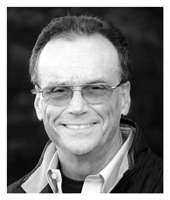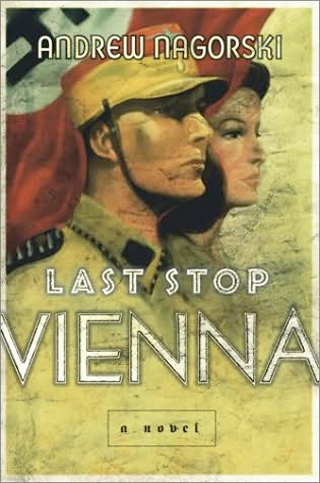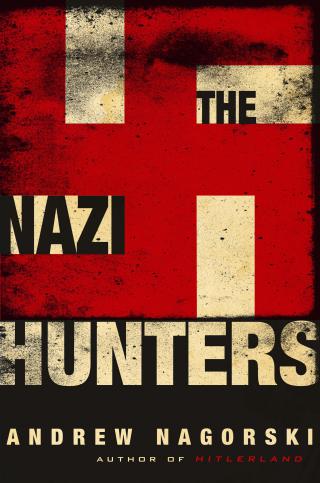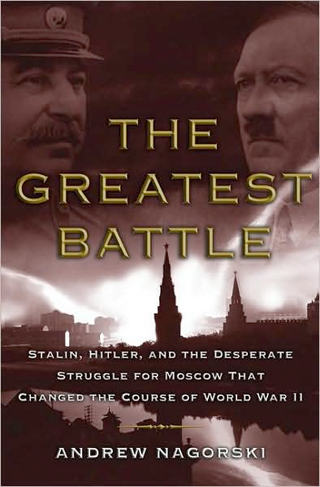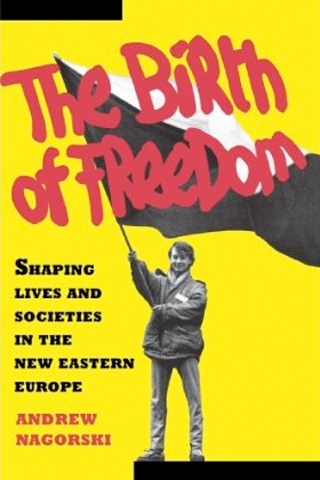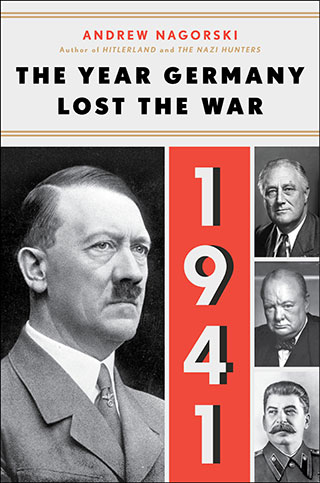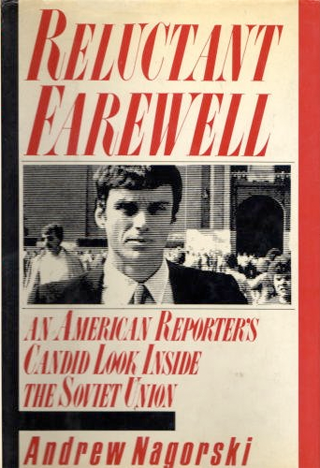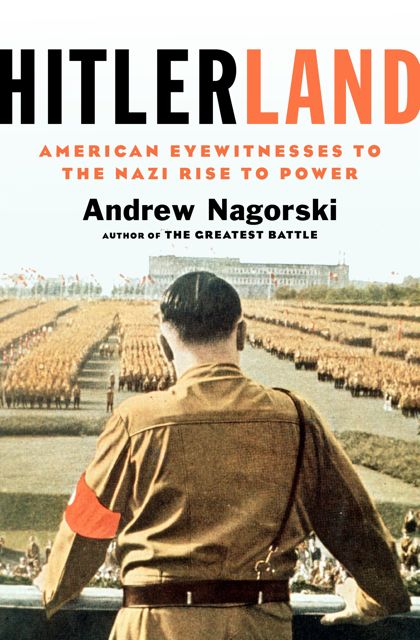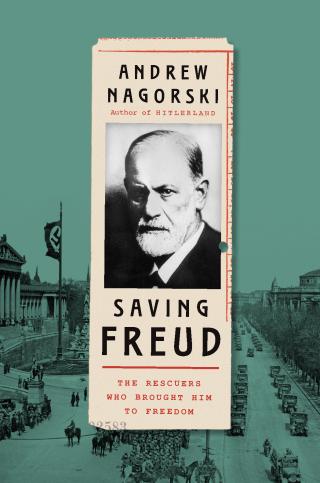“[A] deep and sweeping account of a relentless search for justice.” —The Washington Post
More than seven decades after the end of the Second World War, the era of the Nazi Hunters is drawing to a close as they and the hunted die off. Their saga can now be told almost in its entirety.
After the Nuremberg trials and the start of the Cold War, most of the victors in World War II lost interest in prosecuting Nazi war criminals. Many of the lower-ranking perpetrators quickly blended in with the millions who were seeking to rebuild their lives in a new Europe, while those who felt most at risk fled the continent. The Nazi Hunters focuses on the small band of men and women who refused to allow their crimes to be forgotten — and who were determined to track them down to the furthest corners of the earth.
The story of the Nazi hunters is coming to a natural end. It was unprecedented in so many ways, especially the degree to which the initial impulse of revenge was transformed into a struggle for justice. The Nazi hunters have transformed our fundamental notions of right and wrong. Andrew Nagorski’s book is a richly reconstructed odyssey and an unforgettable tale of gritty determination, at times reckless behavior, and relentless pursuit.
This excerpt tells part of the story of Harvard trained lawyer Benjamin Ferencz, who fought as an infantryman before being transferred Patton’s Third Army Judge Advocates section in late 1944. At the end of the war he was involved in the investigation of various war crimes, including the murder of downed American airmen. He briefly returned to the States to get married before joining General Taylor’s War Crimes investigation team based at Nuremberg:
Upon his return to Germany with his new wife, Ferencz was dispatched to Berlin to set up a branch of war crimes investigators there. In the spring of 1947, one of his best researchers rushed into his office to let him know about a major discovery. While rummaging through a Foreign Ministry annex near Tempelhof Airport, he had found a remarkable set of secret reports sent to the Gestapo.
They provided full details, filed on a daily basis, on the mass shootings and first experimental gassings of Jews, Gypsies, and other civilian “enemies” on the Eastern front by Einsatzgruppen—the special execution squads assigned that task before the killings were shifted to the gas chambers of the camps.
On a small adding machine, Ferencz started tallying up the number of victims mentioned in these laconic reports of shootings. “When I passed the figure of one million, I stopped adding,” he recalled. “That was quite enough for me.” Ferencz rushed back to Nuremberg to tell Taylor of these findings, urging him to put this evidence to good use in another trial. This chance discovery provided precise information on which unit — and which commanders — were responsible for the wholesale killing of Jews, Gypsies, and others as German troops attacked the Soviet Union in 1941.
Taylor’s initial reaction was cooler—and more calculated—than Ferencz had expected. The general explained that the Pentagon was un- likely to appropriate more funds and personnel for trials beyond the ones already planned for. Besides, the public didn’t seem particularly eager to see more trials. Ferencz wouldn’t let go, arguing that if no one else would take the case on, he would do so personally, on top of his other duties.
“Okay, you’ve got it,” Taylor assented, making him the chief prosecutor» He was only twenty-seven at the time.
Ferencz moved back to Nuremberg to prepare his case. The challenge was how to handle the huge body of evidence against approximately three thousand members of the Einsatzgruppen who had methodically murdered civilians on the Eastern Front. Ferencz explained that he chose the most senior and best-educated SS officers to put on trial since it was impossible to do more than that.
For starters, the Nuremberg courtroom had only twenty-four seats in the defendants’ dock. Noting that “justice is always imperfect,” Ferencz admitted this was only “a small sampling of major defendants.” Of the original twenty-four he decided to prosecute, one committed suicide before the trial and another collapsed during the reading of the indictment. That left twenty-two.
The trial ran from September 29, 1947, to February 12, 1948, but Ferencz presented the prosecution’s case in a mere two days. “I suppose that the Guinness Book of World Records might have noted it as the fastest prosecution in a trial of such magnitude,” he wrote later. He was convinced that the documents provided more damning evidence than any witnesses could.
“I didn’t call any witnesses, for a good reason,” he explained. “I may not have had any experience, but I was a damn good criminal law student at the Harvard Law School. And I know that some of the worst testimony you can get is eyewitness testimony. . . . I had the reports, and I could prove the validity of the reports, although -they chal- lenged them, of course.”
In his opening statement, Ferencz charged the defendants with “the deliberate slaughter of more than a million innocent and defenseless men, women, and children . . . dictated, not by military necessity, but by that supreme perversion of thought, the Nazi theory of the master race.” Then he broke down the big number to show exactly how this was possible. The evidence showed that the four Einsatzgruppen, each composed of five hundred to eight hundred men, “averaged some 1,350 murders per day during a 2-year-period; 1,350 human beings slaughtered on the average day, 7 days a week for more than 100 weeks.”
Ferencz used a new term to describe the crimes of the defendants: genocide.
It was coined by a Polish Jewish refugee lawyer, Raphael Lemkin, who — as early as 1933 — had tried to warn the world that Hitler was deadly serious about his threat to exterminate an entire race. Ferencz met Lemkin – “the somewhat lost and bedraggled fellow with the wild and pained look in his eyes,” as he put it — in the halls of the Nuremberg court- house, where he was fervently lobbying to win recognition of genocide as a new category of international crime.
“Like the Ancient Mariner of Coleridge’s poem, he collared anyone he could to tell them the story of how his family had been destroyed by the Germans,” Ferencz recalled. “Jews were killed just because they were Jews.” He would then end with pleas to back his efforts to recognize genocide as a special crime. Ferencz deliberately included the term in his opening statement as a result of Lemkin’s intense appeals, defining it as “the extermination of whole categories of human beings.”
The young prosecutor concluded his initial presentation with a line that would resonate among those seeking a measure of justice for such monumental crimes for decades to come; in fact, it would be quoted fifty years later by the head of the new United Nations special tribunals for crimes in Yugoslavia and Rwanda. “If these men be immune, then law has lost its meaning, and man must live in fear,” Ferencz declared.
After he wrapped up the prosecution case on the second day, the remaining months of the trial were devoted to the testimony of the defendants.
Michael Musmanno, the presiding judge from Pennsylvania, was soon persuaded that Ferencz “had not been engaging in figures of speech but in numerals of cast iron reality.” And he described the diminutive prosecutor as “David taking Goliath’s measure” as he demolished the defendants’ attempts to shift the blame for their killing sprees to anyone but themselves, or maintained that they had tried to be as “humane” as possible as they carried out their murderous tasks.
Musmanno was accompanied by two other judges who helped him handle the Atrial, but, as Ferencz noted, he completely dominated the proceedings. The son of Italian immigrants, Musmanno had defended famed anarchists Nicola Sacco and Bartolomeo Vanzetti in the 1920s, and he regularly displayed a flair for drama. He launched a crusade against drunk driving as a criminal court judge in the mid-1930s, order- ing twenty-five men serving time for alcohol-related offenses to attend a funeral of a miner killed by a drunken driver. He also warned that anyone questioning the existence of Santa Claus—people who contributed to the heartbreak of children, as he put it — would be held in contempt of court. “If the law recognizes John Doe it will certainly recognize Santa Claus,” he declared.
Ferencz wasn’t sure what to make of this flamboyant figure at first. He was annoyed by the fact that Musmanno kept overruling his objections to the defense’s presentation of evidence that he characterized as “remote hearsay, obviously falsified documents, or biased witnesses that should have been excluded.” The judge then told Ferencz and his team outright what they had suspected: he was going to keep accepting anything the defense submitted “up to and including the sex life of a penguin.” This gave birth to the term “the Penguin Rule.”
But Ferencz also noted that Musmanno was fascinated by the testi- mony of defendants like Otto Ohlendorf, the father of five who had studied both law and economics, boasted a doctorate in jurisprudence, and had commanded Einsatzgruppe D, probably the most notorious killing squad. The young prosecutor had included Ohlendorf precisely because he was one of the best-educated mass murderers in history.
Turning to address Ohlendorf directly, Musmanno chose his words carefully. “The soldier who goes into battle knows that he must kill, but he understands that it is a question of battle with an equally armed enemy. But you were going out to shoot down defenseless people. Now, didn’t the question of the morality of that order enter your mind? Let us suppose that the order had been—and I don’t mean any offense in this question—suppose the order had been that you kill your sister. Would you not have instinctively morally appraised that order as to whether it was right or wrong – morally, not politically or militarily – but as a matter of humanity, conscience, and justice?”
Ohlendorf looked shaken; he opened and clenched his fist and his eyes shot around the courtroom. As Musmanno recalled later, “He was aware that a man who would kill his own sister made of himself something less than human.” All he could do was to try to avoid answering the question. “I am not in a position, your Honor, to isolate this occurrence from the others,” he replied.
But to the prosecution, Ohlendorf not only still insisted that he had no right to question his orders but tried to portray the executions he conducted as self-defense, since, as Ferencz summed up his argument later, “Germany was threatened by Communism, Jews were known to be bearers of Bolshevism, and Gypsies could not be trusted.”
Such reasoning certainly did little to help Ohlendorf’s case — or those of other defendants. All the more so because they had been in a position to know better, something that was not lost on Musmanno. “It is to be doubted that one could find at a casual reading table in a public library as many educated persons as were gathered in the defendants’ dock of the Einsatzgruppen trial in Nuremberg,” he wrote later.
General Taylor, who stepped in to make the closing statement for the prosecution, emphasized that the defendants were the leaders of “the trigger men in this gigantic program of slaughter,” and that the record clearly demonstrated “the crimes of genocide and the other war crimes and crimes against humanity charged in the indictment.” Significantly, it was now not just Ferencz but also Taylor, who was overseeing all the sub- sequent Nuremberg trials, employing the new term of genocide, coined by Lemkin.
As a judge back in Pennsylvannia, Musmanno had never sentenced anyone to death. A devout Catholic, he was troubled enough about the prospect of handing down such verdicts to retreat to a nearby monastery for several days. Ferencz had not explicitly asked for death sentences; as he explained later, he was not against the death penalty but “I could never figure out a sentence that would fit the crime.”
When the judge emerged to pronounce judgment, Ferencz was star- tled by what he heard. “Musmanno was much more severe than what I expected,” the prosecutor recalled. “Each time he said ‘Death by hanging’ it was like a hammer blow that shocked my brain.” The judge issued thirteen such verdicts, and sentenced the remaining defendants to prison terms ranging from ten years to life.
Ferencz finally understood why Musmanno had insisted on “the Penguin Rule.” He had wanted “to give the accused every possible right,” as Ferencz put it. “He was confident that he would not be deceived by spurious submissions, and that in the end, the court would have the last word.” When it did so, “I suddenly developed a much greater respect and affection for Judge Michael Musmanno,” he concluded.
Much later, as happened with the Dachau verdicts, the charges would be reviewed and the sentences reduced in several cases. Looking back as a ninety-three-year-old, Ferencz offered the final figures: “I had three thousand Einsatzgruppen members who every day went out and shot as many Iews as they could and Gypsies as well. I tried twenty-two, I con- victed twenty-two, thirteen were sentenced to death, four of them were actually executed, the rest of them got out after a few years.” Then, he added somberly: “The other three thousand—nothing ever happened to them. Every day they had committed mass murder.”
While Ferencz was proud of his record, he was also frustrated by some of his experiences in Nuremberg—particularly the attitudes of the accused and their accomplices. He avoided talking to any of the men he prosecuted outside of the courtroom, except in a single case—that of Ohlendorf.
Ferencz exchanged a few words with him after he was sentenced to death. “The Iews in America will suffer for this,” the condemned man, who would be among the four who were hanged, told him. Ferencz added: “He died convinced that he was right and I was wrong.”
Few Germans expressed themselves quite so bluntly to the victors, but contrition was extremely rare. “I never had a German come up to me and say I’m sorry all the time I was in Germany,” Ferencz pointed out. “That was my biggest disappointment: nobody, including my mass murderers, ever said I’m sorry. That was the mentality.”
“Where is justice?” he continued. “It was only symbolic, it’s only a beginning, that’s all you can do.”
